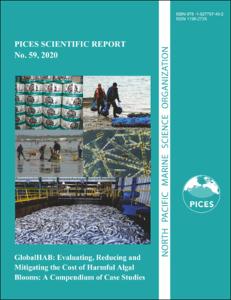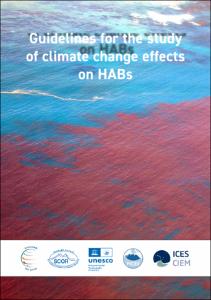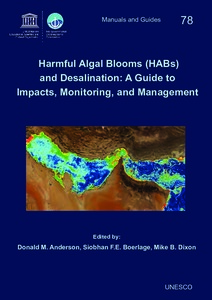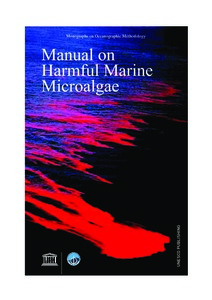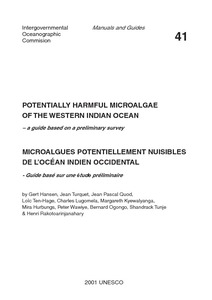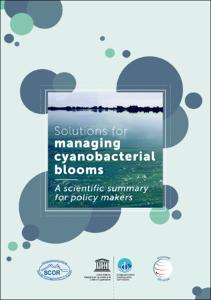Browsing ⇒ IOC: Intergovernmental Oceanographic Commission. Not IODE and GOOS by Subject "HAB"
Now showing items 1-8 of 8
-
GlobalHAB: Evaluating, Reducing and Mitigating the Cost of Harmful Algal Blooms: A Compendium of Case Studies.
(North Pacific Marine Science Organization, Victoria, BC, Canada, 2020)Over the last two decades, several efforts have been addressed to compile what is known about the economic impacts of harmful algal blooms (HABs; e.g., Anderson et al., 2000; Hoagland and Scatasta 2006; Huppert and Trainer, ... -
Guide for designing and implementing a plan to monitor toxin-producing microalgae. 2nd Edition.
(Unesco & IAEA, Paris, France & Vienna, Austria, 2016)The first edition of this manual was first published in 2011 in Spanish. Pigmented phytoplankton is the main primary producer and constitutes the foundation of the marine food webs. Blooms, the explosive growth of ... -
Guidelines for the study of climate change effects on HABs.
(UNESCO-IOC/SCOR, Paris, France, 2021)Our planet Earth is changing. Marine and freshwater ecosystems are experiencing intense natural and anthropogenic pressures that will generate unforeseen changes in their structure and functioning. The drivers of climate ... -
Harmful Algal Blooms (HABs) and Desalination: a Guide to Impacts, Monitoring and Management.
(Intergovernmental Oceanographic Commission of UNESCO,, Paris, France, 2017)Arid countries throughout the world are heavily reliant on seawater desalination for their supply of drinking and municipal water. The desalination industry is large and rapidly growing, approaching more than 20,000 ... -
Manual on Harmful Marine Microalgae. 2nd revised edition.
(UNESCO, Paris, France, 2004)Following a general introduction on harmful algal blooms, the Manual proper is composed of four parts: Methods, Taxonomy, Monitoring and Management, and Appendices. The Methods section covers oceanographic field-sampling ... -
Potentially harmful microalgae of the western Indian Ocean: a guide based on a preliminary survey.
(UNESCO-IOC, Paris, France, 2001) -
Real-time Coastal Observing Systems for Marine Ecosystem Dynamics and Harmful Algal Blooms: theory, instrumentation and modelling.
(Unesco, Paris, France, 2008)The proliferation of harmful phytoplankton in marine ecosystems can cause massive fish kills, contaminate seafood with toxins, impact local and regional economies and dramatically affect ecological balance. Real-time ... -
Solutions for managing cyanobacterial blooms: A scientific summary for policy makers.
(UNESCO-IOC, Paris, France, 2019)Algae grow wherever there is water; in oceans, freshwater lakes, rivers, streams and pools. They underpin aquatic food webs, providing nutrition for animals in the system, and along with microbes, are responsible for ...
 Repository of community practices in Ocean Research, Applications and Data/Information Management
Repository of community practices in Ocean Research, Applications and Data/Information Management
